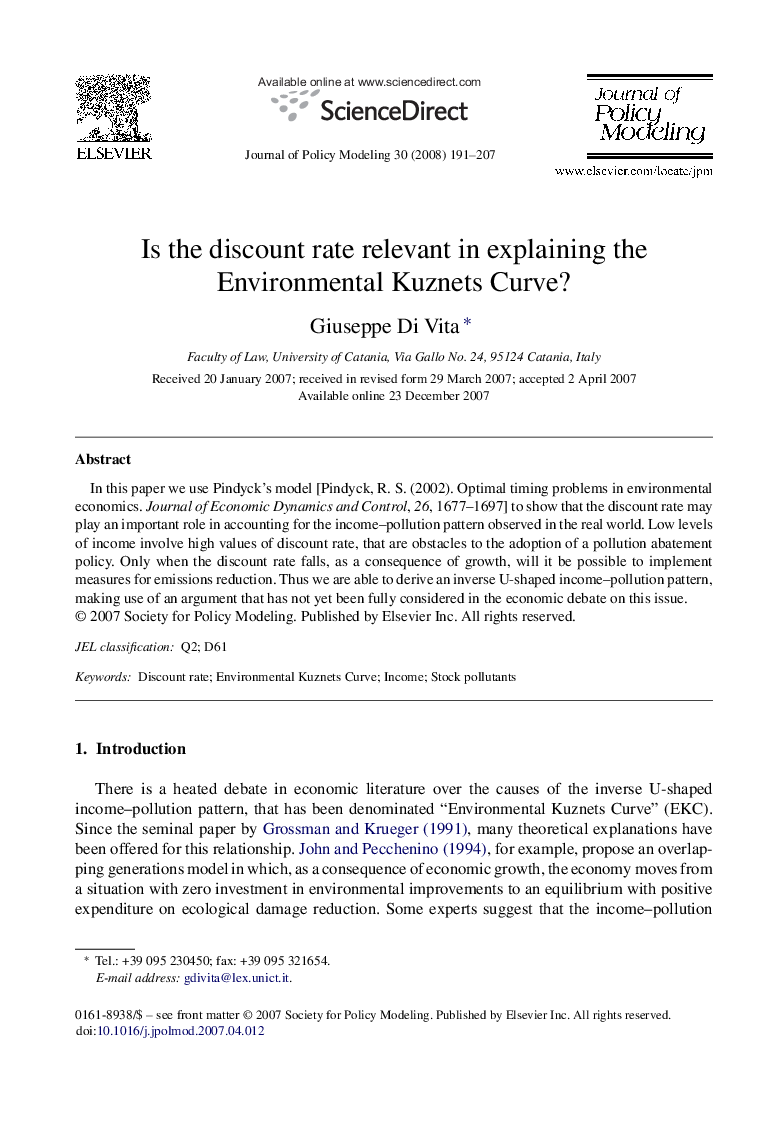| Article ID | Journal | Published Year | Pages | File Type |
|---|---|---|---|---|
| 968856 | Journal of Policy Modeling | 2008 | 17 Pages |
Abstract
In this paper we use Pindyck's model [Pindyck, R. S. (2002). Optimal timing problems in environmental economics. Journal of Economic Dynamics and Control, 26, 1677-1697] to show that the discount rate may play an important role in accounting for the income-pollution pattern observed in the real world. Low levels of income involve high values of discount rate, that are obstacles to the adoption of a pollution abatement policy. Only when the discount rate falls, as a consequence of growth, will it be possible to implement measures for emissions reduction. Thus we are able to derive an inverse U-shaped income-pollution pattern, making use of an argument that has not yet been fully considered in the economic debate on this issue.
Related Topics
Social Sciences and Humanities
Economics, Econometrics and Finance
Economics and Econometrics
Authors
Giuseppe Di Vita,
